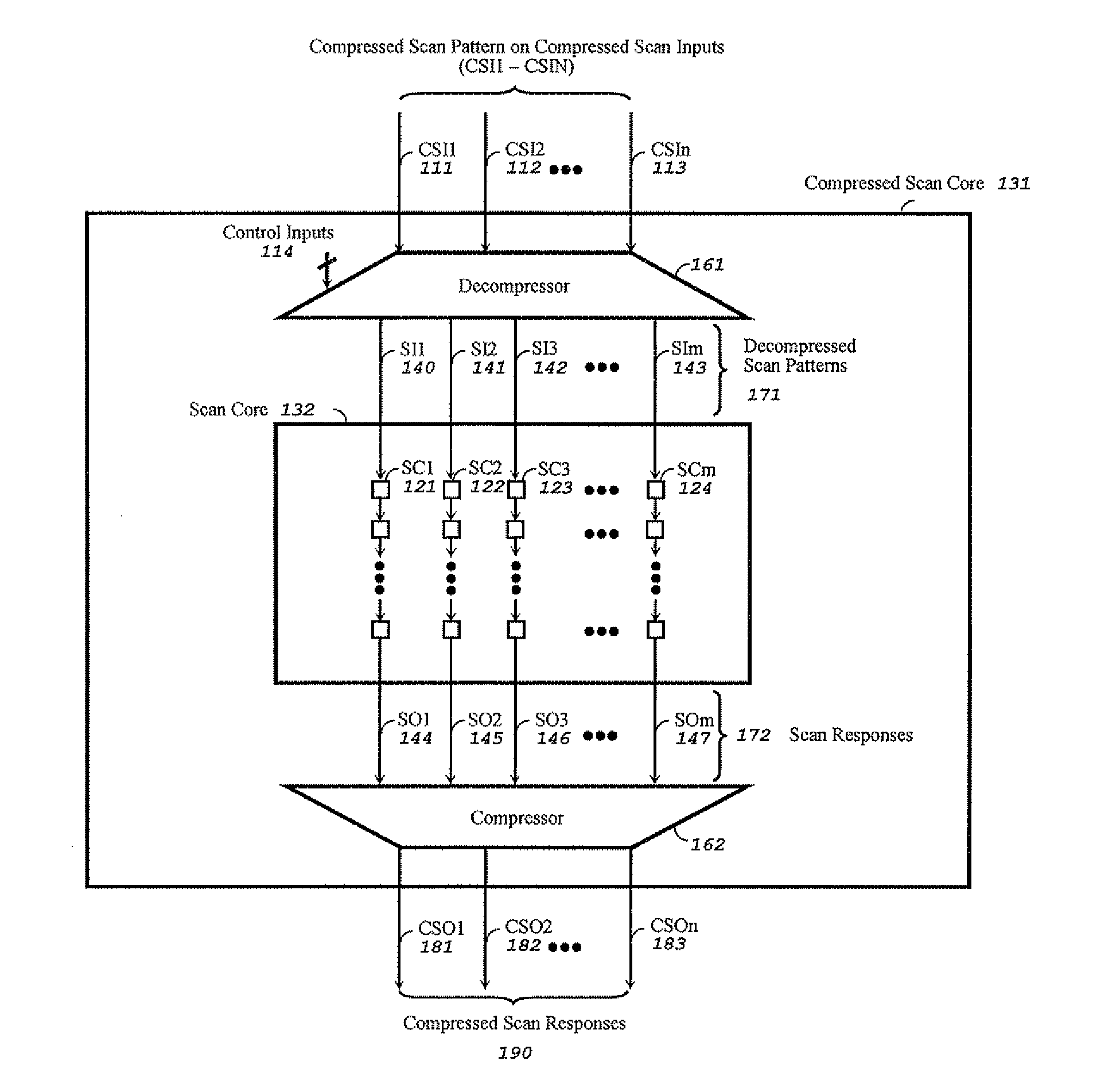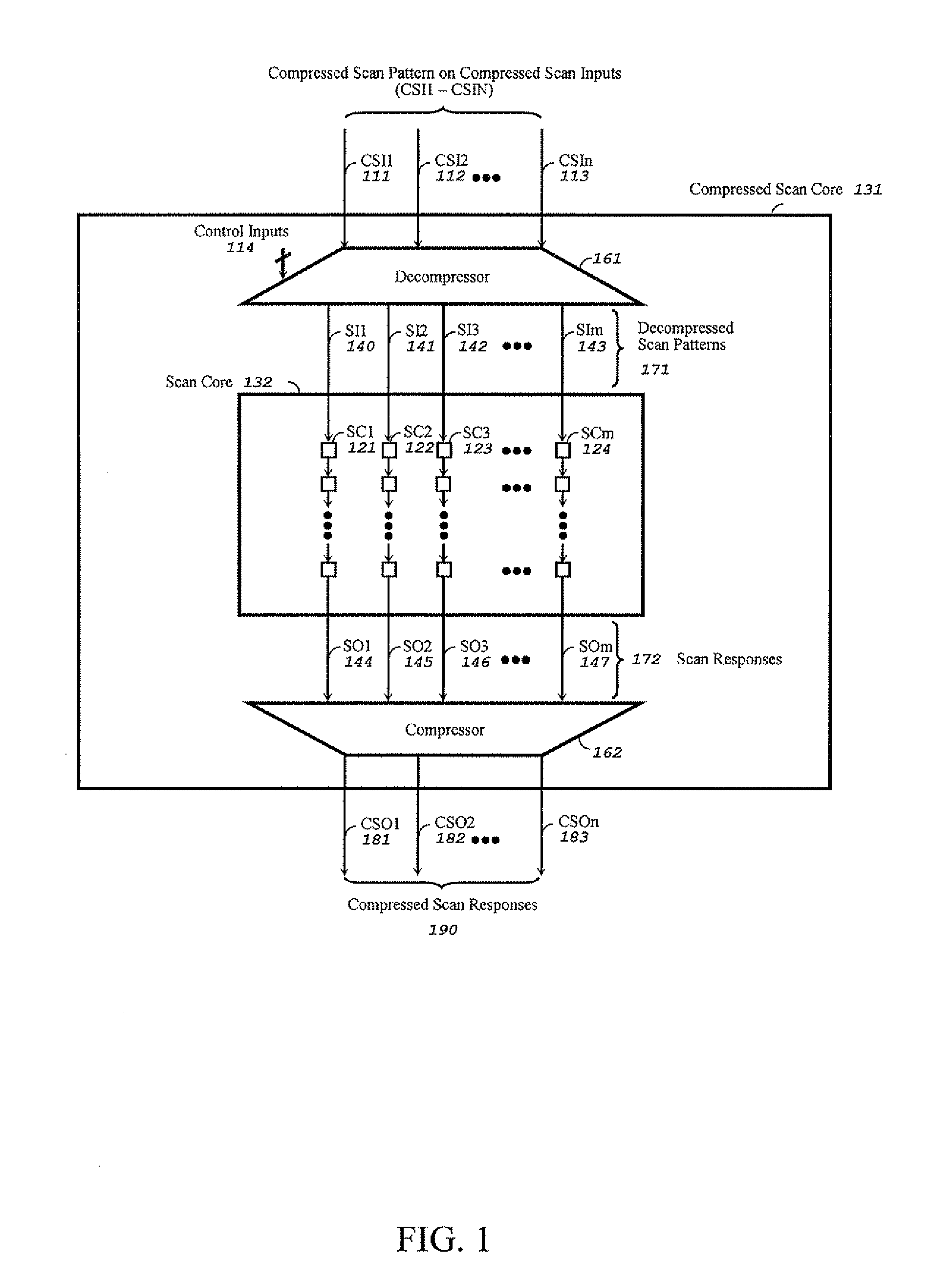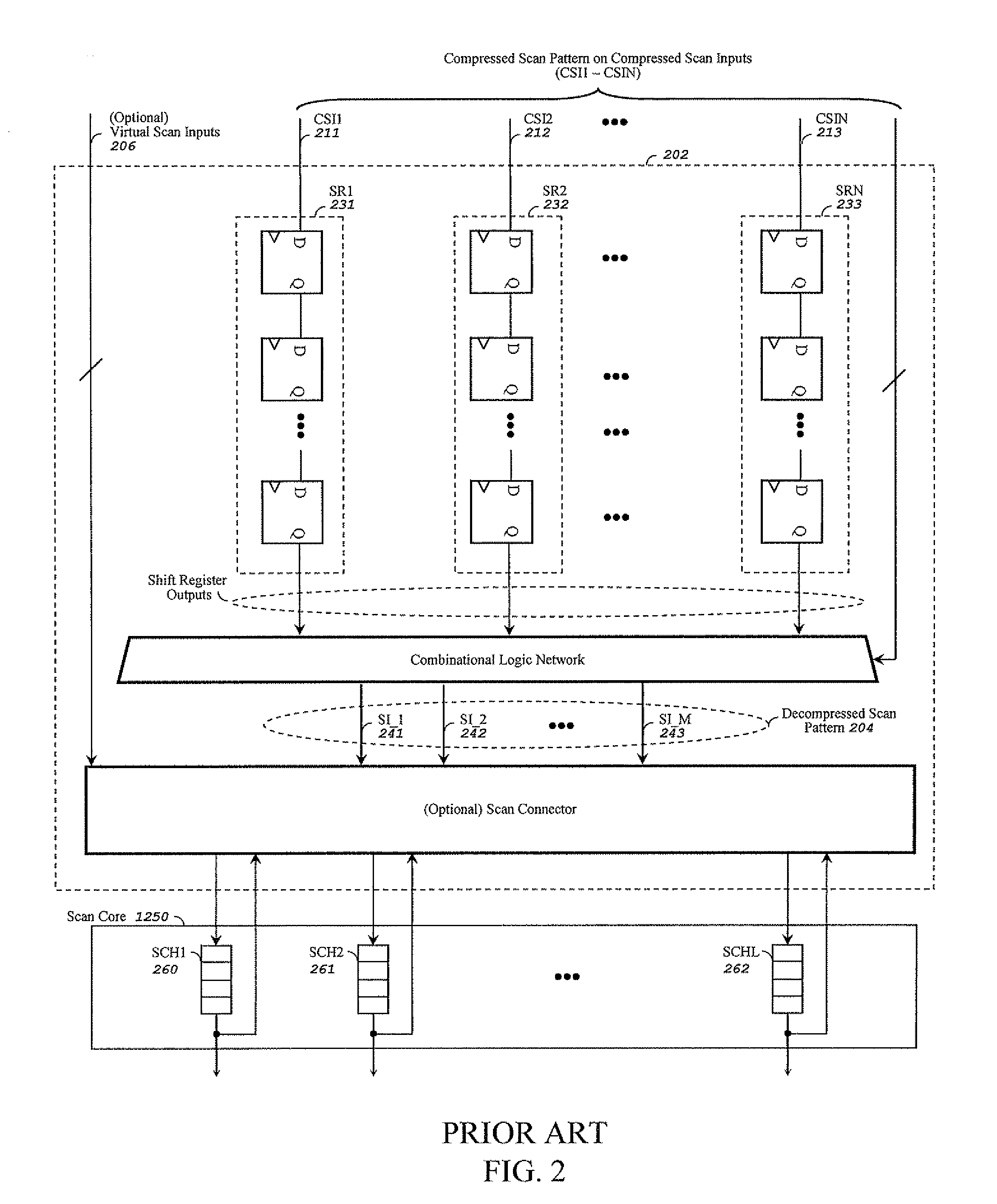Method and apparatus for low-pin-count scan compression
a scan compression and pin-count technology, applied in the direction of logical operation testing, instruments, measurement devices, etc., can solve the problems of significant computational overhead, linear equations that cannot be solved, and scan compression techniques utilizing sequential decompressors such as lfsr circuits are difficult to use, so as to achieve greater encoding flexibility and reduce test data volume and test application time.
- Summary
- Abstract
- Description
- Claims
- Application Information
AI Technical Summary
Benefits of technology
Problems solved by technology
Method used
Image
Examples
first embodiment
[0048]FIG. 5 shows a 4-stage programmable pipelined decompressor, in accordance with the present invention. It consists of a programmable shift register (PSR) with one or more D flip-flops (or latches) and one or more multiplexers. The input of the programmable shift register is connected to a compressed scan input (CSI) coming from an ATE; each output of the D flip-flops (or latches) and CSI may drive the combinational logic network. MUXs 501-504 are placed between each stage of the shift register and are controlled by mode inputs M1-M4. The mode input selects whether the MUX's output comes from the output of the previous stage of the shift register, or whether it comes from the CSI. By setting the mode bits appropriately, it is possible subdivide the original PSR into a set of two or more shorter shift registers. Hence, the mode bits make it possible to program the shift registers to be a certain desired length when performing test vector decompression (i.e., a depth-d pipeline sh...
second embodiment
[0054]FIG. 11 shows a 4-stage programmable pipelined decompressor, in accordance with the present invention. It consists of a programmable shift register (PSR) with one or more D flip-flops (or latches) and one or more multiplexers. The input of the programmable shift register PSR may be connected to a compressed scan input (CSI) coming from an ATE; each output of the D flip-flops (or latches) and CSI may drive the combinational logic network. MUXs 1105-1107 are placed between each stage of the shift register and are controlled by mode inputs M1-M3. The mode input selects whether the MUX's output comes from the output of the previous stage of the shift register, or whether it comes from the CSI. By setting the mode bits appropriately, it is possible subdivide the original PSR into a set of two or more shorter shift registers. Hence, the mode bits make it possible to program the shift registers to be a certain desired length when performing test vector decompression (i.e., a depth-d ...
PUM
 Login to View More
Login to View More Abstract
Description
Claims
Application Information
 Login to View More
Login to View More - R&D
- Intellectual Property
- Life Sciences
- Materials
- Tech Scout
- Unparalleled Data Quality
- Higher Quality Content
- 60% Fewer Hallucinations
Browse by: Latest US Patents, China's latest patents, Technical Efficacy Thesaurus, Application Domain, Technology Topic, Popular Technical Reports.
© 2025 PatSnap. All rights reserved.Legal|Privacy policy|Modern Slavery Act Transparency Statement|Sitemap|About US| Contact US: help@patsnap.com



